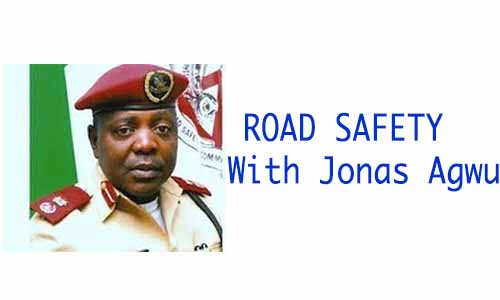Road Safety
October 1st was my birthday. It was a day of gratitude to God Almighty for his tender mercies. No red carpets were rolled for me. There were no talking drums to announce my new age. Yet, glasses clinked in celebration. Sadly, the month preluding October was a month of tragedy at the Federal Road Safety Corps.
The month of September brought tears, anguish and pain to staff and families. In the words of Shehu Mohammed, Corps Marshal of the Corps, five personnel of the Agency were knocked down in September, 2025 by reckless drivers. Here is the breakdown; on 6th september, 2025 from Ekiti State. Another on 8th September, 2025 from Ogun State. Yet, another on 15th September, 2025 from Taraba State. Jos by-pass, in Plateau state on 19th September, 2025 while Obollo-Afor, in Enugu State was on 24th September.
From information sourced from Uzoma Okiti’s Facebook account, there was yet another death on 29th September, at about 4.300pm. It involved Ibrahim Omonowo, a staff of the FRSC who was on duty to ensure safety for travelers along the Okene-Auchi route. But while on that safety mission, a reckless truck driver with registration number JJJ 972 YA, knocked him down. He was rushed to the General hospital, Okene, Kogi State but died shortly
I am consoled that the truck had a registration number. With this number, both the driver as well as the truck owner will be tracked for prosecution. I hope the number plates for the other cases were captured. Without such a number which I told you last week identifies the vehicle; Ibrahim deaths and the death of the others would hit a brick-wall while prosecuting.
As I draw the curtain on this sensitive safety and security issue, let me refresh your mind on what the law says. For emphasis and clarity, it is illegal for any law enforcement operative to engage in the removal/confiscation of number plates from a vehicle. This was how the Corps captured it in a clarification and I do hope that road users would take, according to my learned friend, judicial notice of the clarification.
For appropriate guidance, the following provisions of the law are instructive: Section 10(4)(h) of the FRSC (Establishment) Act, 2007 states: that it’s an offence to be on the road without a valid vehicle license or identification mark being displayed. Similarly, Section 10(4)(s) of the Act makes failure to display number plates on vehicles an offense.
The National Road Traffic Regulations (NRTR) 2012 also provide as follows: Section 36(NRTR) 2012 makes it mandatory for all private and commercial vehicles to have number plates which shall be fixed on them in a manner as not to be easily detachable.
Section 36 states that, all private and commercial vehicles shall as from the commencement of these Regulations have on them Vehicle Identification Number Plates which shall -Be carried by the motor vehicle on two plates which shall conform to the requirements of these regulations; and the number plate shall be fixed in such a manner that each is not easily detachable; and in an upright position or within 15 degrees of such position. Section 39(a): states that “All vehicles private and commercial shall have on them vehicle identification number plates and shall be an offense for any vehicle not to have the said number plates.”
It concludes by stating that ‘apart from identification purposes, vehicle registration number plates are security items that are captured on the national security architecture and have been used to assist security operatives in tracking some serious national security issues. Removing such identification items from vehicles plying our roads will not only offend the law but would further jeopardize national security.
Section 37- (1) of the same Regulations, states that The Identification Number Plates carried by a motor vehicle or articulated vehicle shall be displayed on two plates for a motor vehicle and three plates for an articulated vehicle and shall conform as to lettering, numbering and otherwise with the provision set out in figures 1-11 of Schedule 5 to these regulations. The number plates shall in respect of a motor vehicle be fixed, one on the front of the vehicle and the other at the center or on the off side of the rear of the vehicle or as may be provided by the manufacturer.
In respect of a trailer, one should be fixed on the front of the vehicle and two at the rear of the trailer in an upright position. For a motorcycle, one plate shall be fixed in front and one at the rear with the plate having white background but blue lettering for private green lettering for the Federal, State or Local Government, black lettering for the Armed Forces, Paramilitary Service and red lettering for commercial, so that every letter or figure on the plate is up- right and easily distinguishable in the case of the front plate from behind. In the case of the recovery of a semi-trailer, the operator of the prime mover shall be required to ensure that the entire articulated vehicle carries the same identification number in respect of the prime mover and the semi-trailer.
Each Identification Number Plate must be reflective and so made that any letter, numeral or other identifying mark displayed on it are legible at day time and at night in clear weather and must be visible and recognizable at a distance of not less than 60 metres by the driver of the immediate following vehicle and in the case of motorcycle at a distance of 30 metres.
The Regulation further states in Section 38-(1) that a vehicle shall carry a Vehicle Tag as specified in Form MVA 25 of Schedule 5 to these regulations which shall be issued along with the Vehicle Number Plate and shall carry the same number with the plate and be affixed to the rear windscreen.
Except as otherwise provided under these regulations, number plates shall be transferred from one vehicle or trailer to another; Number plates shall be attached to a person and not to a vehicle and that Number Plate shall be returned to the Motor Licensing Authority on sale of a car and the new owner shall obtain a new set of number plate; At the same time, a Proof of Ownership Certificate is mandatory for issuing new number plates.
Besides these identifiable infractions, driving with one number plate which has become the trademark of criminals as well as deviants is illegal. Similarly, driving with a defaced number plate is not allowed despite the bashing by some road users who have often accused the Corps of producing inferior number plates despite the Corps continuous education on this.
Meanwhile, it is equally illegal to drive a vehicle with broken or faded number plates which, whether in technology driven or analogue enforcement situation, makes identification of number plates almost difficult or impossible. So too is covering your number plate as some do.
Those who carpet the Corps on faded number plate, fail to realize that they could become victims in such vehicles which security operatives need to track to avert the criminal acts. As citizens, we have crucial roles to play in easing the burden of policing our roads and ensuring safety and security. Did I mention the illegal transfer of number plates or the use of unauthorised number plates for ulterior motives. What of the case of the use of Nigerian and foreign number plates as decoy against security operatives
These provisions explain why driving with one number plate or none at all is illegal, and criminal. It also makes the removal of number plate under any guise by law enforcement agents, or touts unauthorized, illegal and I dare say, criminal too.
Security operatives are not from mars. They are not angels. Nor spirits. They rely on citizen policing to function and to guard our roads. Not complying with the law exposes you as a possible suspect. Besides your non -compliance, your failure to be law abiding, deprives them of the necessary tools to police our roads especially in the absence of the right and appropriate infrastructure.
With a total strength of security operatives charged to police and safeguard us still inadequate, the over twelve million drivers or vehicle owners will do great service to the society when they become the eyes of these operatives rather than criticizing them, without adding value to the onerous assignment.

















Leave a comment